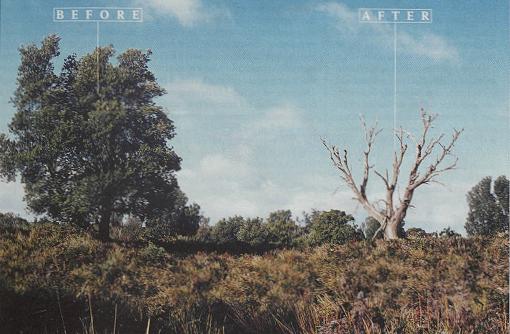
Alissa Marotta
Exploration- Magazine Article
One Marsupial Too Many by Mary Roach
Discover Magazine, December 2000
This article deals with the issue of overpopulation of Koalas on Snake Island in Australia. The Koala population, said to be approximately 2,400, which is roughly one koala per acre of habitat is killing more than 50% of manna gum trees. The Koalas rely on these trees and their eucalyptus leaves as a source of food and spend close to four hours a day resting in them. If the Snake Island Koalas keep growing in number, they will begin to starve.

Already, there is an obvious loss of the eucalyptus. As the men from Ecoplan Australia and the National Cooperative Research Center for Conservation and Management of Marsupials arrive to help resolve the koala problem, the koalas in which they are searching for are clearly visible atop the gum trees.
The "easier" solution would be to have these koalas killed. However, many people have a problem with the killing of animals, especially well-known cute ones such as Koalas. In 1996, many Koalas were shipped from Snake Island to Kangaroo Island, where some eucalyptus forest remains, but now, four years later, the numbers of koalas located in Snake Island continue to grow, and there are no other areas to ship them.
The subject of birth control to stop growth of population has come up as well. However, koalas are known to be both quick and stubborn, therefore, prying a koala out of his home in order to insert the implants necessary, is both time consuming, as well as expensive. A new method of population control called immunocontraception is being tested for future use. Immunocontraception tricks the immune system into thinking that the koala’s eggs are those of a predator. The results are very promising, but there still lies the fact that these animals must be individually caught and treated.
In conclusion, something must be done on Snake Island to deal with the overpopulation of koalas. Research shows that if numbers continue to rise, they would double in eight years, thus severely damaging the island ecosystem. Action is being taken to try to resolve this problem, but all procedures will cost time and money.